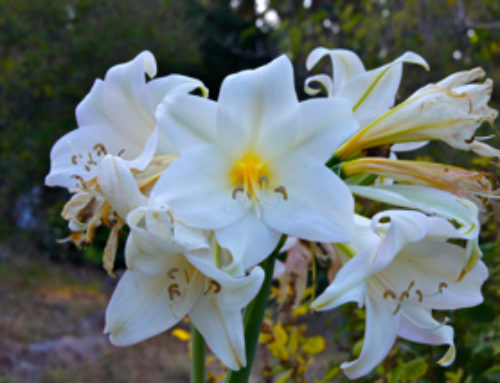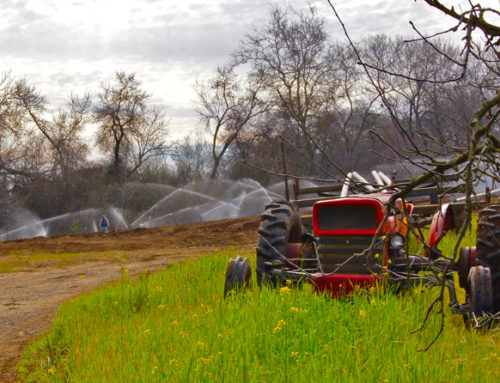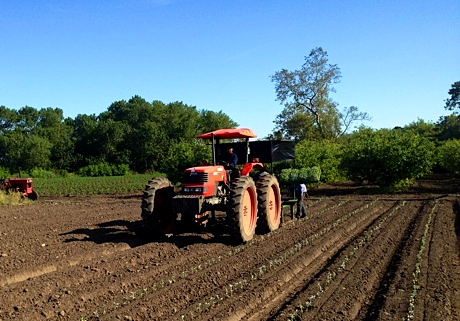 With only 5 weeks left, our 2014 CSA Season is quickly drawing to a close, and with impending rains (we hope soon) the Farm is in transition mode.
With only 5 weeks left, our 2014 CSA Season is quickly drawing to a close, and with impending rains (we hope soon) the Farm is in transition mode.
Tuesday, in anticipation of Wednesday night’s rain, the farm was abuzz with activity. By 7 o’clock in the morning our “Mudder” (high clearance tractor) was out in the field, Juan and Clemente sowing a large block of carrots, cilantro and spring onions. With shorter days and colder weather ahead of us, these seeds will take twice as long to develop into a harvestable crop – I expect January or February of 2015.
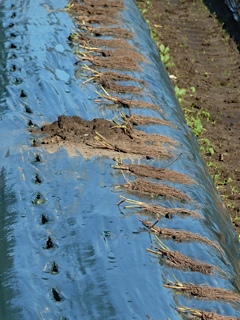
Bareroot strawberry starts waiting to be planted.
As soon as the tractor was freed up from doing the field sowing, Clemente and his team hitched up the transplanter and headed out to plant an acre of mixed brassicas (kale, broccoli, cabbage and cauliflower). By mid afternoon, most of the crew was busy packing CSA shares in the barn, however when the wind picked up and rain clouds started moving in a group of us headed out with the tractors to get the butternut squash, curing in the field, loaded into bins and hauled off into storage. We had just enough time to get it all done before dark–always a good feeling to know the Winter Squash is dry and safe for the winter.
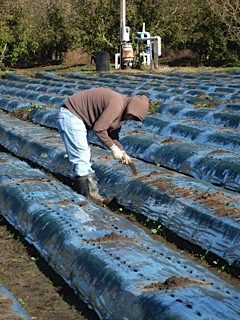
Planting strawberry starts is a delicate task.
The last couple of weeks a lot of energy and attention has gone into preparing the strawberry beds where next seasons crop will be planted. Not a moment too soon since the nursery called to pick up the first 15,000 strawberry starts. The Chandlers are always the first ones and need to be planted right away. It is our earliest variety and we can, under favorable weather conditions, start picking ripe berries as early as March. In addition to strawberries, other popular spring crops we need to plant now are green garlic, fava beans, Brussels sprouts and onions. To ensure a steady harvest during the winter we’ve also been sowing and transplanting hardy wintercrops such as parsnips, rutabagas, cabbage, turnips, broccoli, and leeks. Less winter hardy crops such as all the salad greens will be grown under protective row covers and hoop structures.

Protective row covers keep less hardy crops from getting frost-bit.


